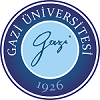
Send us your opinions, requests and evaluations.
MOTOR SPEECH DISORDERS
What is Dysarthria?
In order to speak, we need the tongue, lips, face, throat and respiratory muscles to work together and in a coordinated manner. If there is incoordination in these muscles, problems may occur in speech production. Dysarthria happens when you have weak muscles due to brain damage. It is a motor speech disorder and can be mild or severe.
Causes
Brain damage causes dysarthria. It can happen at birth or after an illness or injury. Anything that causes brain damage can cause dysarthria, such as:
Treatment
Your work with the SLP will depend on the type of dysarthria you have and how severe it is. You may work on:
What is Apraxia?
Apraxia of speech is a neurologic speech disorder that reflects an impaired capacity to plan or program sensorimotor commands necessary for directing movements that result in phonetically and prosodically normal speech (Duffy, 2013).
Signs and Symptoms
Causes
Treatment
After detailed evaluations, patients with apraxia are determined by the speech and language therapist. A therapy program is prepared and implemented in line with the purposes such as the correct use of structures involved in speech mechanism, training the muscles involved in voice production, and providing the appropriate speed and rhythm for speech. In case of need, alternative communication methods are provided to the patient by using gesture-mimic, sign, writing or computer-aided programs.
For clinical evaluation, intervention sessions or more information, please apply to our Secretariat of the Department of Speech and Language Therapy.
Department Secretary: Ceren Ay
Contact Number: 0312 216 26 24

Send us your opinions, requests and evaluations.